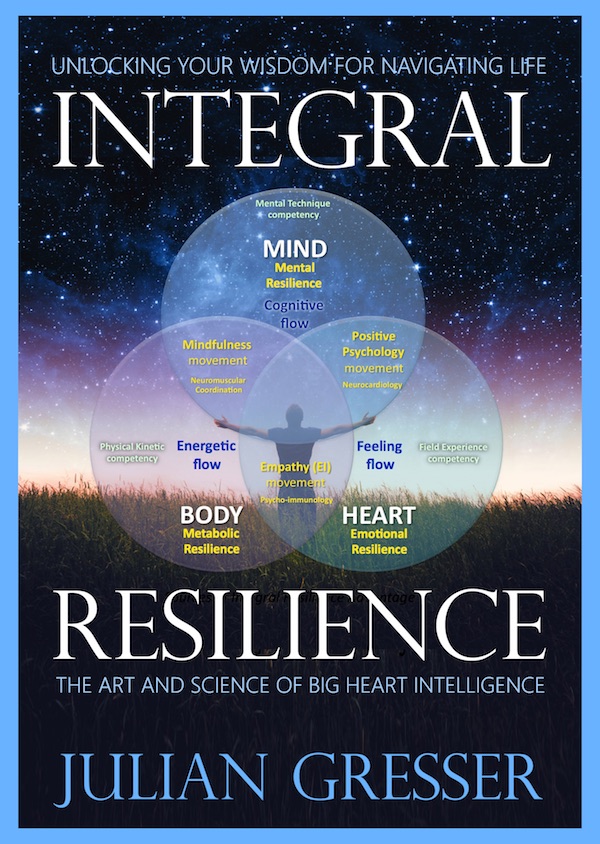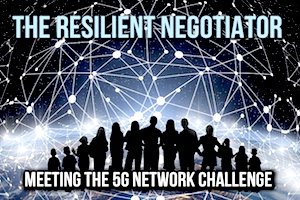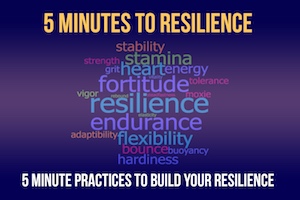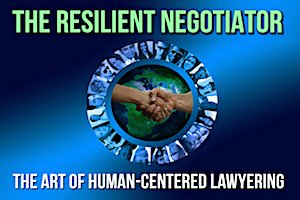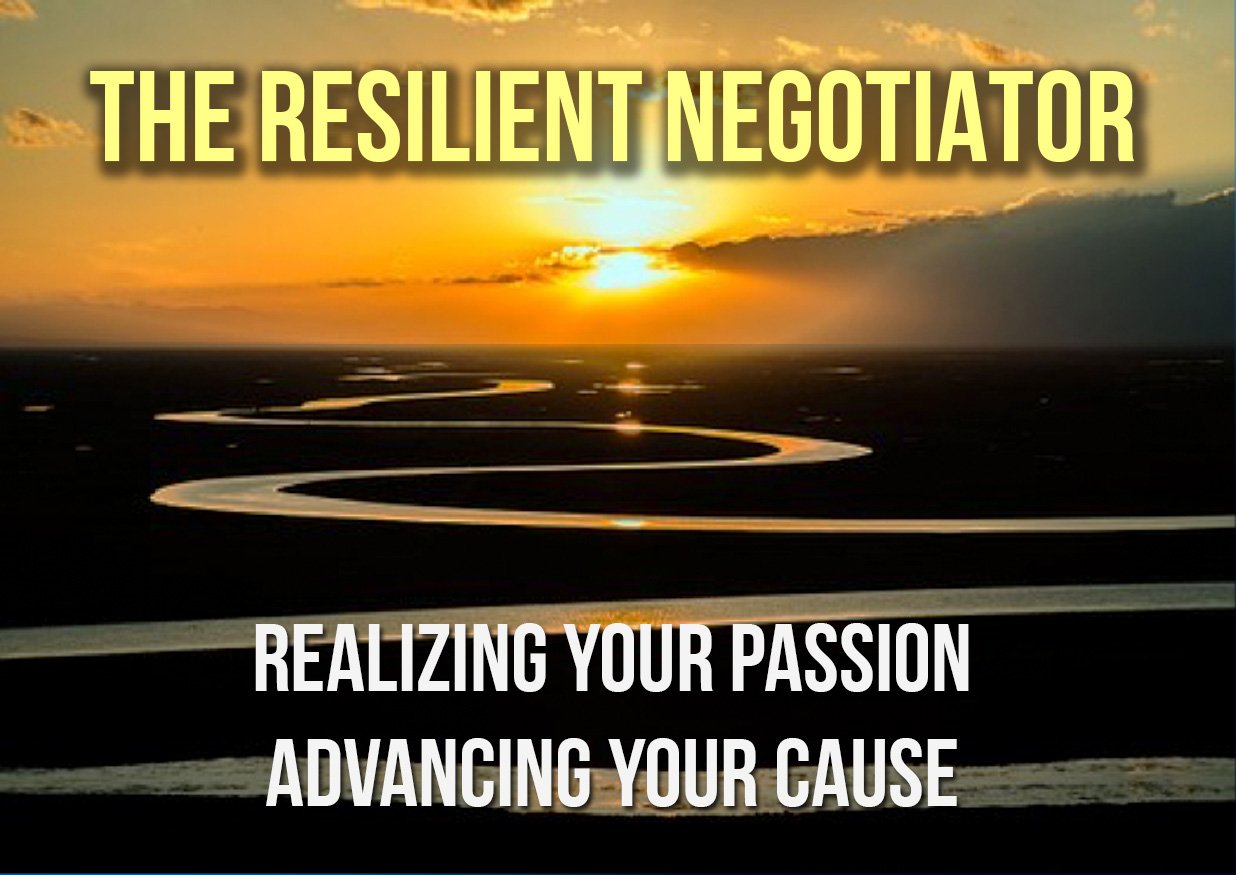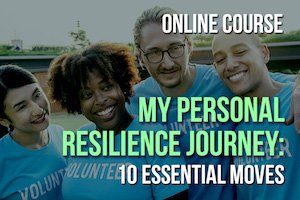Senior Citizens Can Build Resilience Together
How Santa Barbara’s Senior Citizens Can Build Resilience Together
A Conversation with Julian Gresser, Chairman/ CEO of Big Heart Technologies and Dr. Gary Linker, Director Santa Barbara Center for Successful Aging
Gary: Julian, I am delighted to have this chance to explore the fascinating topic of resilience. Perhaps a good start is to define what you and I mean by resilience.
Julian: Good idea. The first thing that comes to mind for many people is an ability to bounce back from adversity. I like the bounce part, but why go backward to something that wasn’t so great in the first place? I view resilience as the capacity to bounce forward, to turn adversities to advantage.
Gary: I like this definition. It is dynamic and especially well-suited to our readers who face many medical, social, and economic challenges in aging.
Julian: I would like to suggest this basic proposition for our discussion: resilience is a core life competency that anyone can cultivate and easily apply in diverse ways.
Gary: Right out the gate, I must ask isn’t resilience a young person’s game, something that loses with age?
Julian: Not necessarily. The data from NASA and other studies suggest the opposite which may be counter intuitive. Resilience can hold steady, and in some cases even increase in advanced old age. Another common belief is that a loss of power inevitably comes with aging; but actually, this premise is also not necessarily correct. Even though physical power declines with age, we can still increase our inner power. I have trained with Chinese martial artists in their 80s and 90s who possessed amazing inner energy (qi) power. Resilience and such inner power naturally align.
Gary: I know what you mean. I just went to a Frankie Valle 4 Seasons concert. Frankie performed for 90 minutes. Guess what, he is 84! But, let’s get very basic here. I get up in the morning. What’s the first thing I can do to build my resilience?
Julian: Ok, let’s begin with physical resilience. if you do a Google search on the main diseases commonly associated with aging—diabetes, hypertension, cardiac problems, stroke, neurodegenerative illnesses, and cancer—you will find that all are closely related to a loss of resilience. The process is even intra-cellular. There is good evidence that mitochondria dysfunction correlates closely with an impairment of resilience.
Gary: So, what do I do?
Julian: You start to move. For when we move, we begin to change our relationship to the ground. As we get older, many of us have a great fear of falling. So, practicing getting up and lying down a few times, a brisk walk, dancing, taiji, even tango help to restore this dynamic positive relationship with the earth. I practice horse stance for 1-2 minutes. Horse stance is a half squat where I lower my center of gravity and connect to the earth, while neck and head are straight as if a line of thread is connecting me to the heavens. I also play with a Reflex Ball, which has taught me a great deal about play and resilience. The ball is attached to your head by a light cord. You strike it and it bounces back. You learn how to move rapidly or slowly in tune with the ball; there are some deep lessons here like “yielding power.” You strike hard, the ball comes back hard; yet, if you don’t react but give way, the ball will lose energy; and then you have your opening. The Bible says, “A soft word turneth away wrath.” The ball teaches us this. It is a mirror of our own developing resilience. Our readers may enjoy this Alliances short video.
Gary: I do agree that the cultivation of physical resilience is in part a personal practice; but as a therapist I am convinced, especially for seniors, the development of resilience is not a solo journey.
Julian: I agree with you. We have ample evidence that restoring a sense of meaning, belonging, and engagement is essential. Years ago, I was friends with a remarkable minister, the Reverend Mitsuo Aoki who was a professor at the Divinity School at the University of Hawaii. He cared for people in advanced stages of illness. He would tell me that when those in his care regained a sense of connection to community, healing began–not only in a spiritual sense, but also in many cases in remission or a complete return to robust health. This renewed sense of connection restored hope which engendered a positive attitude to their circumstances.
Gary: What are some practical ways you have found to build this sense of engagement to community? If I want to connect to others, how can I do that?
Julian: It starts with a specific attitude. Various studies show that “paying forward”—the act of selflessly passing on to others the good things that come our way– not only builds personal resilience but also generates a positive “multiplier effect” throughout communities. I first discovered this principle in my work in negotiation. In negotiation an important behavioral skill that can be developed is to reduce our dependency on others or circumstances (“field independence”), in other words to stay out of “need. Perhaps the most effective way to reduce neediness is to care for others. Charles Dickens wrote “No one is useless who can lighten the burdens of another.” Over the years I have been interested in tracking what happens when we reduce neediness and pay forward. I have discovered that good things tend to come to us in mysterious and often quite wonderful ways. I call it “Creating Your Own Luck.” It is a form of advanced skill that seems to show up as we develop resilience. I describe the process in detail in my online living book, Laughing Heart—A Field Guide to Exuberant Vitality for All Ages—10 Essential Moves.
Gary: What are some other simple things senior citizens can do to build or to restore resilience? For example, in another conversation we had discussed the role of beauty. How does that fit in here?
Julian: Ah, you are touching one of my favorite subjects. In fact, “Discovering Beauty” is number 3 in the 10 Essential Moves. Most people believe the enjoyment of Beauty is a passive process. But actually, discovering Beauty is itself a learned skill. The challenge is to expand our appreciation and enjoyment of what is beautiful. Most people can enjoy Beauty in a baby, a flower, the ocean, or a sunset. But can we also find beauty in ordinary things or difficult circumstances, in even ugly things? There is so much Beauty in the world to be discovered if we will only slow down and observe, rather than continually rushing through life. To me, this is one of the great opportunities of advancing age.
I have a friend who was the primary caregiver for his wife. She was declining rapidly from Alzheimer’s. When I spoke with him, he was despairing and close to burning out. Then his daughter moved back home and everything changed. He cherished the small moments of respite that gave him time and space for himself. He told me he began to discover beauty in little mundane things he had always taken for granted–like mowing the lawn or looking at products in the supermarket. Imagine selecting a detergent as an opportunity to discover Beauty! He was grateful again for his life.
Gary: It seems you are saying Beauty is connected to slowing down, being present to our current life experience; and that all of this helps us to reconnect to the world and to re-create ourselves. This renewed sense of connection is the foundation of resilience. If so, Nature must play a pivotal role in your work.
Julian: Nature is the archetypal teacher of resilience. The Wildling Museum in Solvang has just opened a special exhibit on “Regeneration and Resilience in Nature” featuring how the natural world here in the Coastal Area is gradually recovering from the Thomas Fire and mudslides. There is a famous Chinese poem that expresses well this insistent resilience of Nature from the crazy depredations of humans: “Although the kingdom was destroyed, the castle grasses and mountain flowers are once again in bloom.”
Gary: What about music? As you know, there is substantial work on the regenerative effects of music on memory, especially with people struggling with advanced Alzheimer’s disease.
Julian: As a musician (I play oboe d’amore) I am keenly interested in exploring the potentialities of music in developing resilience. The great masters, Bach, Mozart, Handel, Beethoven and others succeeded in transmuting their life force, or vitality into musical form, and the amazing thing is even today we can learn to “download” this same energetic power to fortify our own resilience. You and our readers can see for yourselves by simply listening to the excerpts under Move # 5. The performing arts are also marvelous means for communities to build and celebrate resilience. One of the members of our International Advisory Board members, originally a Russian expert at the Wilson Center for International Scholars in Washington, has studied this interesting phenomenon in depth. In performing arts festivals music, dance, joy, exuberance, play and engagement all come together in some marvelous alchemic process, and the result is resilience.
Dr. Roger Jahnke, a qigong teacher, author, and Chinese medical doctor practicing in Santa Barbara has written a very good book, “The Healing Promise of Qi” in which he describes in some detail how qi, or subtle vital energy, can transmit immediately across whole communities, especially when “heart” is engaged. In Western terms we might call it simply exuberance. The point is that when communities come together to celebrate anything that is imbued with heart and its attributes, joy, hope, love, play, and connection to our fellow voyagers, a deep community-wide and sustainable resilience occurs.
Gary: It seems in your view there are many roads to experiencing an enhanced sense of resilience. One other avenue that comes to mind is flow. Might flow have a role here?
Julian: Resilience as I experience it is also very much related to a sense of flow. Flow is the essence of our being. I believe you pointed out that for river rafters, the safe zone is in the middle is where the river flows easily and smoothly. Similarly, when we are in a harmonious flow, we move effortlessly. In Chinese culture this is referred to as Wu wei. But inevitably we are faced with obstacles and challenges. If we view these experiences as messages that we not in the flow, then we can adjust our perspective, look for the clues that the obstacles provide, and adjust accordingly. Heart, especially love, is a powerful energy field that can to melt obstacles. Thus, flow, Heart, love, and resilience are mutually reinforcing.
Gary: Can you help me connect a bit more directly resilience and Big Heart?
Julian: My colleagues and I have a name for what we have been discussing. We call it “Big Heart Intelligence,” or more simply “Integral Resilience.” When we open ourselves emotionally, the flood of energy surrounding the heart becomes activated. The human heart has an extraordinary ability to gather all the disparate parts, to see the world holistically. The dimensions of resilience we have been discussing—physical, emotional, energetic, cognitive, psychological, and spiritual—are all connected. When we enhance resilience in one domain, naturally it transfers to another, especially when the process is mediated by the Heart. We are currently developing a way to measure improvements in Integral Resilience and its associated Multiplier Effects.
Gary: Before concluding, I want your thoughts on how we can operationalize all of this. How can seniors in Santa Barbara, indeed the entire community, build resilience?
Julian. As you noted in our first meeting, it is all about engagement. We have developed a personalized, interactive, and intelligent online platform called the “CHME” (Community Health Multiplier Exchange) that will support the entire community in exploring, creating, learning, having adventures, challenging ourselves, making new friends, helping and caring for one another. Santa Barbara is blessed in so many ways. And surely one of our greatest treasures is the large number of talented people and dedicated non-profit organizations. But the present ecosystem is fragmented, vertically siloed by specialization, and unfortunately based on competition for limited philanthropic resources. In my opinion this is an outdated 20th century model that is poorly equipped to address so important a challenge as successful aging.
But what if there is a more compassionate 21st century path to motivate Santa Barbara’s diverse organizations to come together, to share ideas, products, and services, and thereby to enlarge the “pie” for everyone? This is not utopia. The technology and human resources required are all locally available; the cost, modest. The first beneficial and measurable outcomes in enhanced community resilience can be delivered within months. The first sign of an awakening resilience is to open ourselves to Seeing the Big Picture. Hopefully this interview will invite new comers to the conversation. I look forward to expanding our dialogue with those who attend one of our upcoming community presentations. The first will take place at Chaucer’s Bookstore on September 11th @ 7:00 pm. The second is a public presentation at Vista Del Monte Senior Community on Tuesday, October 23rd at 2 pm. Please come and invite a friend!
- Center for Successful Aging
- Dr. Gary Linker
- Julian Gresser Books: Piloting Through Chaos Trilogy: Wise Leadership/Effective Negotiation (1985), The Explorers Mind (2013) and Laughing Heart. (2017)
© Copyright Big Heart Technologies and Dr. Gary Linker, August 2018 All Rights Reserved


